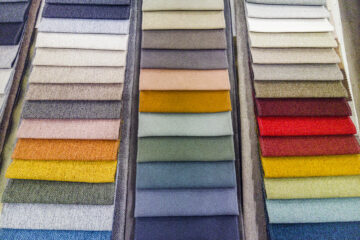The State Of U.S. Textile Manufacturing
The U.S. textile industry has experienced a remarkable transformation over the past decade, embracing technological innovations, sustainable practices, and evolving consumer preferences. As we navigate through 2025, let’s explore the current landscape of textile manufacturing in the United States.
Industry Growth and Economic Impact
The U.S. textile sector has demonstrated resilience and growth in recent years. In 2023, the industry employed 508,759 individuals, with textile and apparel shipments valued at $64.8 billion. Exports of fiber, textiles, and apparel combined were $29.7 billion in 2021. Projections indicate that by 2025, the value added in the textiles market is expected to reach $21.6 billion, with a compound annual growth rate (CAGR) of 1.27% anticipated from 2025 to 2029.
Technological Advancements
The integration of advanced technologies has been pivotal in modernizing U.S. textile manufacturing. Manufacturers are increasingly adopting automation and artificial intelligence to enhance efficiency, reduce waste, and predict market trends. These technologies enable rapid responses to consumer demands and streamline production processes.
The development of smart textiles, which incorporate electronic components into fabrics, has opened new avenues in health monitoring, sports training, and environmental sensing. These innovations enhance the functionality and value of textile products.
Sustainability and Ethical Practices
Sustainability has moved from a buzzword to a baseline expectation for consumers. The implementation of blockchain technology ensures transparency, allowing consumers to trace products from raw material sourcing to finished goods. This traceability fosters trust and promotes ethical sourcing.
The industry is also embracing circular fashion principles, focusing on recycling and upcycling to reduce waste. Initiatives such as California’s Responsible Textile Recovery Act mandate brands to manage the recycling and reuse of textiles, preventing them from ending up in landfills.
There’s a significant shift towards using sustainable materials like organic cotton, recycled polyester, and bio-based vegan leather alternatives, like Desserto® Cactus Leather. These materials reduce environmental impact and cater to the eco-conscious consumer.
Reshoring and Localized Production
The trend towards reshoring—bringing manufacturing back to the U.S.—has gained momentum: Advances in technology have made localized production more feasible, reducing lead times and transportation costs. Companies like Ferrara Manufacturing in New York are experiencing a resurgence as demand for American-made apparel rises. This, in turn, supports local economies and reduces carbon footprints associated with long-distance shipping.
Challenges and Future Outlook
Despite the positive trends, the textiles industry will continue to face new challenges as the supply chain and consumer needs change. Competing with low-cost overseas manufacturers remains a concern, necessitating continuous innovation and efficiency improvements. Increasing environmental and social regulations require manufacturers to adapt quickly to remain compliant and competitive.
Looking ahead, the U.S. textile industry is poised for continued growth, driven by innovation, sustainability, and a commitment to quality. By embracing these trends, manufacturers can meet consumers’ evolving demands and contribute to a vibrant and responsible textile sector.
Partner with Softline Today!
Softline Brand Partners helps brands bring their sustainable visions to life. Whether launching a new product line or transitioning to eco-conscious materials, we provide the expertise needed to create high-quality, stylish products. The future of fashion is sustainable—are you ready to make the shift?










